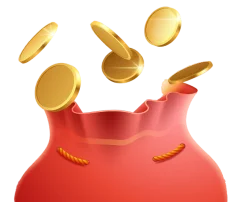Please allow ads on our site
Please log in to access this content. You will be redirected to the login page shortly.
LoginChapter 8 note
Class 10 SCIENCE IN CLASS 10 2 years ago
IntroductionReproductionReproduction is the process by which all organisms multiply in number and increase their population.To know more about Reproduction,\xa0visit here.Asexual reproductionAsexual reproduction is a method of reproduction that involves only one organism. A single organism reproduces two or multiple organisms on its own. This is seen in all unicellular organisms, some multicellular organisms and a few plants.For More Information On Plant Reproduction, Watch The Below Video:42,723To know more about Asexual reproduction,\xa0visit here.Sexual reproductionThe mode of reproduction that involves two individuals; one male and one female. They produce *** cells or gametes which fuse to form a new organism.To know more about Sexual reproduction,\xa0visit here.Asexual ReproductionFissionFission is an asexual reproduction that is common in most of the unicellular organisms.When the fission results in two daughter cells, it is binary fission (e.g. paramecium).When fission results in many daughter cells, it is called multiple fission (e.g. Plasmodium).Planes of fission may be different for different organisms.\xa0To know more about Binary Fission,\xa0visit here.BuddingBudding is a type of asexual reproduction in which a small cyst-like structure is formed on the parent’s body, which gives rise to a new individual.Bud may remain attached to the parent (yeast) or may separate and become a new individual (hydra).For More Information On Budding, Watch The Below Video:47,467To know more about Budding,\xa0visit here.Regeneration and fragmentationRegeneration is the process of growing back the lost organ or body part by the organism (e.g. lizard).Fragmentation is the process by which an organism gets fragmented into smaller pieces and each piece grows into a whole new organism.E.g. Planaria, HydraFragmentation and Regeneration in HydraTo know more about Regeneration and fragmentation,\xa0visit here.Spore formationOrganisms such as fungi make spores that can grow into complete new individuals when dispersed from their fruiting body.Vegetative propagationThis is a\xa0type of asexual reproduction seen in plants.The vegetative part of the plant,\xa0like leaves, stem, roots, gives rise to a new plant.Vegetative propagation can be artificial or natural.Natural vegetative propagation happens through leaves (e.g. bryophyllum), stem (e.g. turmeric, ginger), runners/stolon (e.g.grass runners, strawberry), bulbs ( e.g. onion, lily), etc.Artificial methods include cutting, grafting, layering and plant tissue culture.To know more about Vegetative propagation,\xa0visit here.Sexual ReproductionTypes of Cell divisionTwo types of cell division seen in eukaryotic organisms:MitosisTakes\xa0place\xa0in\xa0somatic\xa0cellsMaintains\xa0the\xa0chromosome\xa0numberProduces\xa0two,\xa0diploid\xa0daughter\xa0cellsRequired\xa0for\xa0asexual\xa0reproduction,\xa0development\xa0and\xa0growth,\xa0cell\xa0replacement\xa0and regenerationMeiosisTakes\xa0place\xa0in\xa0***\xa0cellsReduces\xa0the\xa0number\xa0of\xa0chromosomes\xa0by\xa0halfProduces\xa0four\xa0haploid\xa0daughter\xa0cellsRequired\xa0for\xa0sexual\xa0reproduction, i.e\xa0gamete formationTo know more about Cell division,\xa0visit here.The Reproductive SystemTo know more about Human Reproductive System,\xa0visit here.Male reproductive systemThe main reproductive organ in males is a pair of testes.They produce the male *** cells called sperms and also produce male *** hormone testosterone.To know more about Male Reproductive System,\xa0visit here.Male main reproductive organsThe main reproductive organ in males is a pair of testes.They are present in scrotal sacs outside the body and contain seminiferous tubules as the structural and functional unit.Male *** cells, sperms, are produced by seminiferous tubules and mature in the epididymis.Leydig cells or interstitial cells present in between the seminiferous tubules secrete hormone testosterone.Male accessory reproductive organsSeveral accessory reproductive organs that aid in the reproductive process.The prostate gland and the seminal vesicles are glands of reproductive system which make semen and nourish the sperms.*****, having urethra passing through it, is called copulatory organ.Male DuctsIn males, the vas deferens and the urethra are the main ducts.A single vas deferens carries sperms from respective testis up to urethra.Urethra acts as a common passage for semen and urine.Female reproductive systemThe human female reproductive system consists of a pair of ovaries, a pair of fallopian tubes/oviducts and the accessory organs such as the uterus and the ******.To know more about Female reproductive system,\xa0visit here.Female main reproductive organThe main reproductive organ in a\xa0female is a\xa0pair of ovaries.They produce the female *** cells called eggs or ova and also produce female *** hormones called estrogen and progesterone.Female accessory reproductive organUterus and ****** are the accessory reproductive organs in human females.The uterus is the site of fetal development and ****** receives sperms from the male.Menstrual CycleMenstruationMenstruation is the cyclic event of the release of the ovum from the ovary and its removal from the body when fertilization does not happen.During menstruation, the blood-rich endometrium of the uterus also breaks down while the ovum is being removed from the body.Two pituitary hormones, LH and FSH and two ovarian hormones, estrogen and progesterone, all have their roles in menstruation.In humans, the cycle repeats every 28 days.To know more about Menstrual Cycle,\xa0visit here.FertilizationHuman reproductionHumans reproduce sexually. The male produces sperms and the female produces eggs. When the sperm fuses with the egg, it forms a zygote that gives rise to a new progeny.To know more about Fertilization,\xa0visit here.Contraceptive MethodsReproductive healthReproductive health deals with the prevention of STDs and unwanted pregnancy. Understanding the reproductive system is also a part of reproductive health awareness.ContraceptivesContraceptives are devices that prevent unwanted pregnancy and help avoid STDs.Contraceptives can be of various types such as mechanical barriers, hormonal/chemical methods, surgical methods, etc.Coitus InterruptusIt is a very unreliable contraceptive method where the coitus is stopped before the male ejaculates inside the female reproductive tracts.Rhythm MethodAnother unreliable method of contraception where coitus is avoided when the female is fertile and the chances of fertilization are very high.CondomsOne of the most effective methods of contraception.A mechanical barrier that stops the semen from entering the female tract preventing pregnancy.It also avoids the possibility of contracting STDs.DiaphragmsDiaphragms are barriers that can be added inside the female reproductive tracts.They stop the entry of semen inside the female tract and thus prevent pregnancy.Contraceptive PillsContraceptive pills are chemical methods of contraception.They change the level of hormones in the body that prevents the release of the ovum from the ovaries.Emergency PillEmergency pills are those pills which can be taken after coitus to avoid pregnancy.They quickly change the level of hormones in the body and prevent a successful implantation even if the egg gets fertilized.IUDIUD stands for Intrauterine Device.They can be used for a couple of years.It is a device that is inserted into the uterus, changing its shape and preventing successful implantation of the zygote.SterilizationSterilization is a surgical method of going permanently sterile.This can be done in both males and females.In males, it is called vasectomy and in females, it is called tubal ligation.To know more about Contraceptive Methods,\xa0visit here.Reproduction in PlantsSexual reproduction in flowering plantsSexual reproduction in plants happens through flowers.Essential whorls of the flowers such as androecium and the gynoecium help in the sexual reproduction of plants.Non-essential parts of flowersThe typical structure of flower contains essential whorls and non-essential whorls.Sepals and Petals are called non-essential whorls as they do not directly take part in reproduction.Sepals\xa0protect the inner delicate whorl during bud condition and also perform photosynthesis if they are green in colour.Petals, when they are coloured, attract insects for pollination.Essential whorls of flowersAndroecium and gynoecium are called as essential/reproductive whorls of a flower.Androecium produces pollen grains containing male gametes and gynoecium produces ovules which are female gametes.Bisexual flowers contain both the whorls while unisexual flowers contain either of them.Each individual member of androecium is called a\xa0stamen\xa0and consists of\xa0anther\xa0and filament.Anther produces haploid pollen grains.Each individual member of gynoecium is called\xa0pistil\xa0and consists of\xa0stigma, style\xa0and\xa0ovary.PollinationThe process of transfer of pollen grains from anthers to the stigma of a flower is known as pollination.It is required for fertilization.Pollination has two types, self-pollination\xa0(autogamy) and cross-pollination (allogamy).In self-pollination, transfer of pollen grains takes place from anthers to the stigma of the same flower or another flower of the same plant.In cross-pollination, pollens are transferred from anthers to the stigma of another flower.Many pollinating agents play their roles in cross-pollination. Examples: water, wind, insects, birds, bats, etc.FertilizationFusion of male and female gametes is known as fertilization.In flowering plants after pollination, the pollens germinate on the stigma surface of pistil and generate two male nuclei.Ovule has egg cell and two polar nuclei.One male nucleus fuses with two polar nuclei and forms triploid endosperm.Another male nucleus fuses with the egg cell and forms the zygote that gives rise to the embryo and future plant.After fertilization, ovary becomes fruit and ovules turn into seeds. All other parts wither away.
Revesion
Posted on 19 Oct 2022, this text provides information on Class 10 related to SCIENCE IN CLASS 10. Please note that while accuracy is prioritized, the data presented might not be entirely correct or up-to-date. This information is offered for general knowledge and informational purposes only, and should not be considered as a substitute for professional advice.
Take Quiz To Earn Credits!
Turn Your Knowledge into Earnings.

No matter what stage you're at in your education or career, TuteeHub will help you reach the next level that you're aiming for. Simply,Choose a subject/topic and get started in self-paced practice sessions to improve your knowledge and scores.

